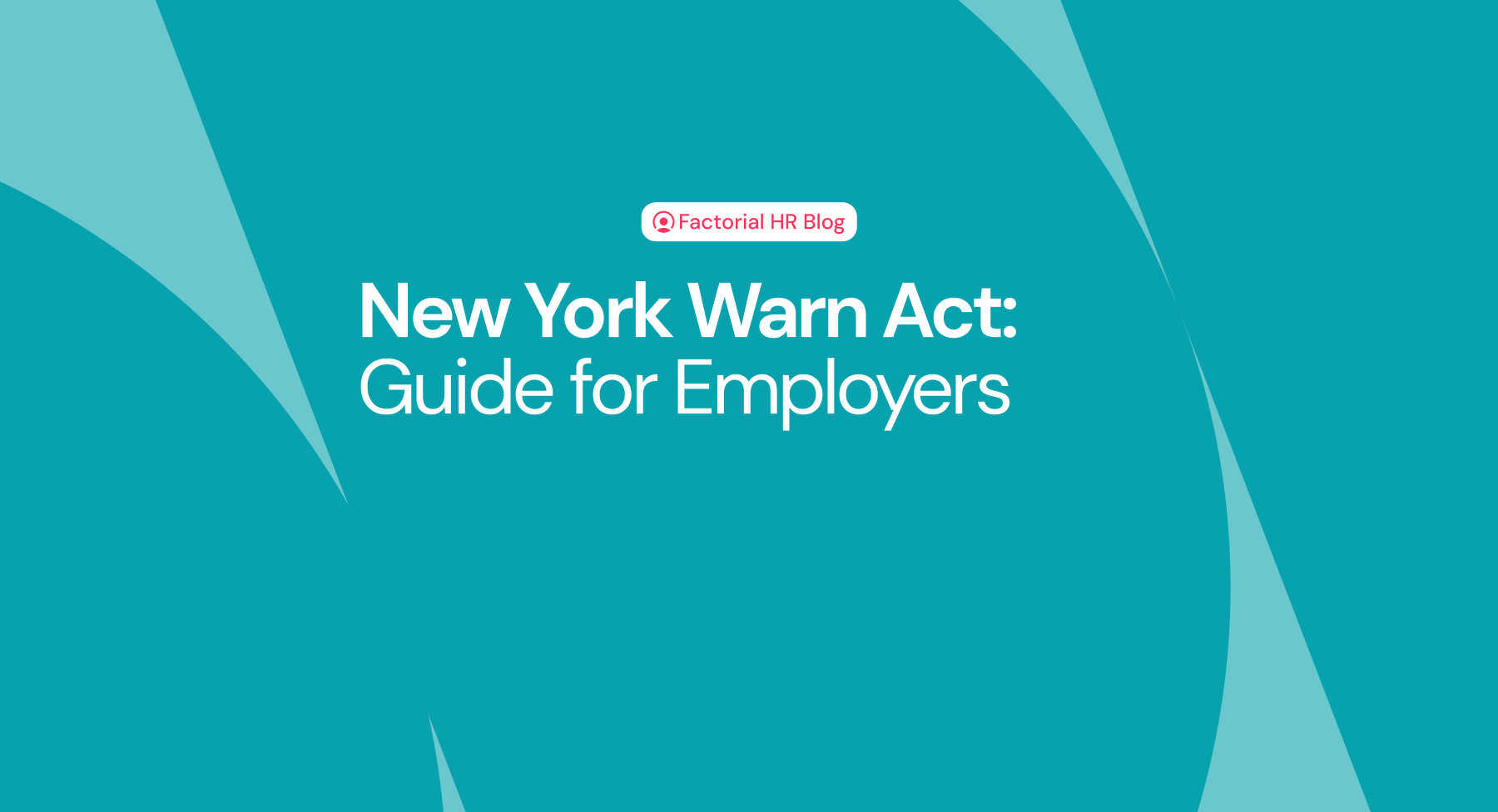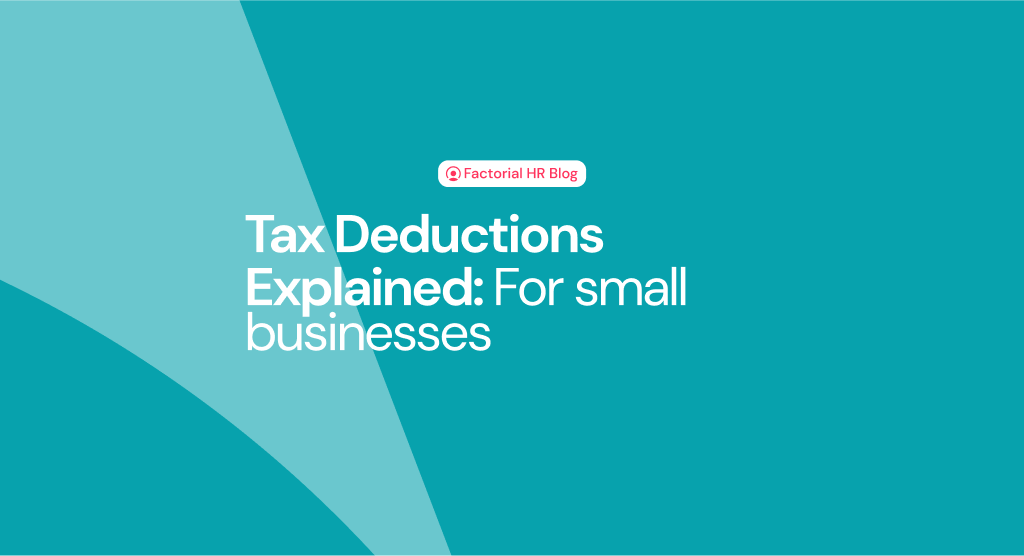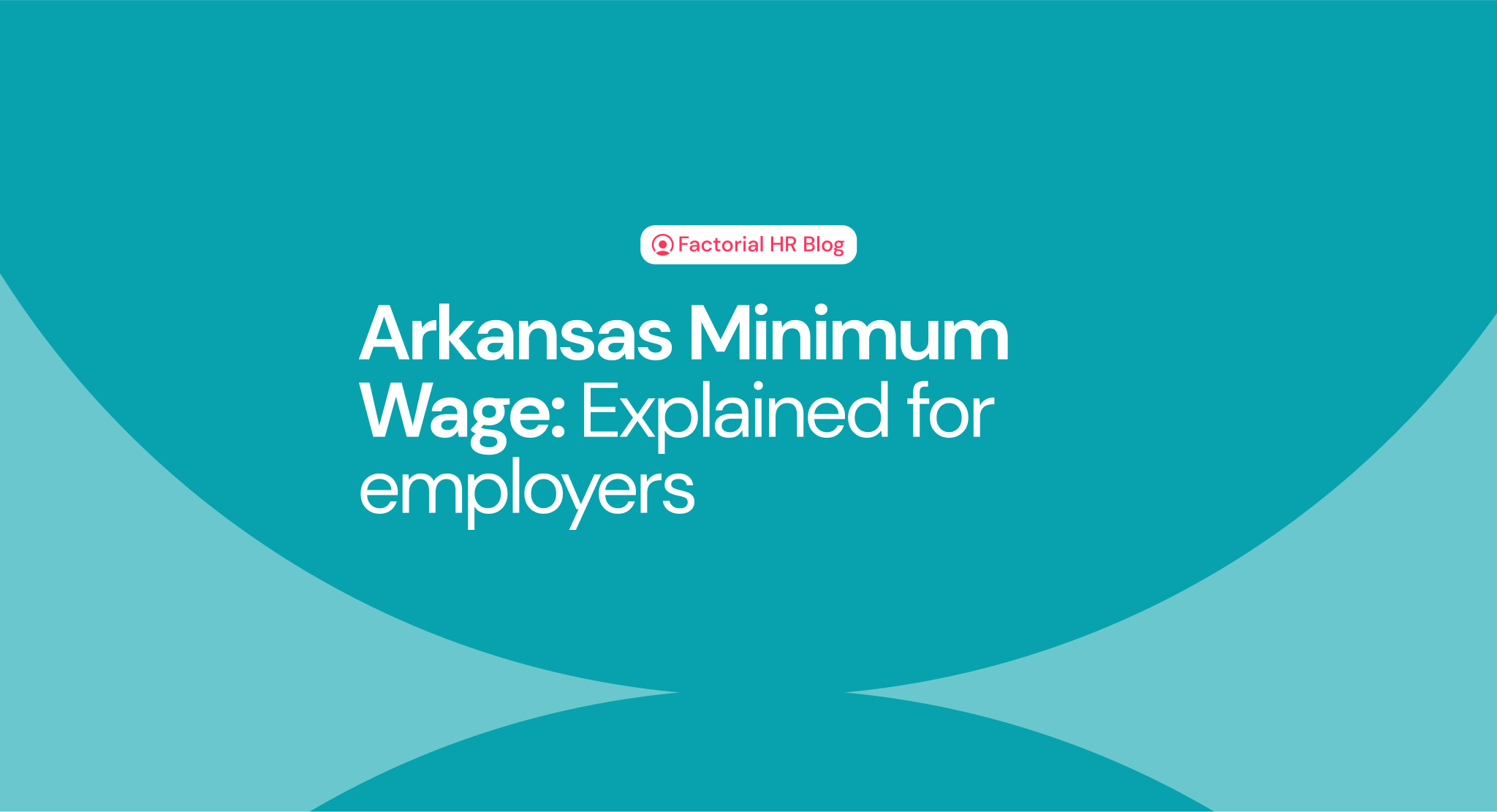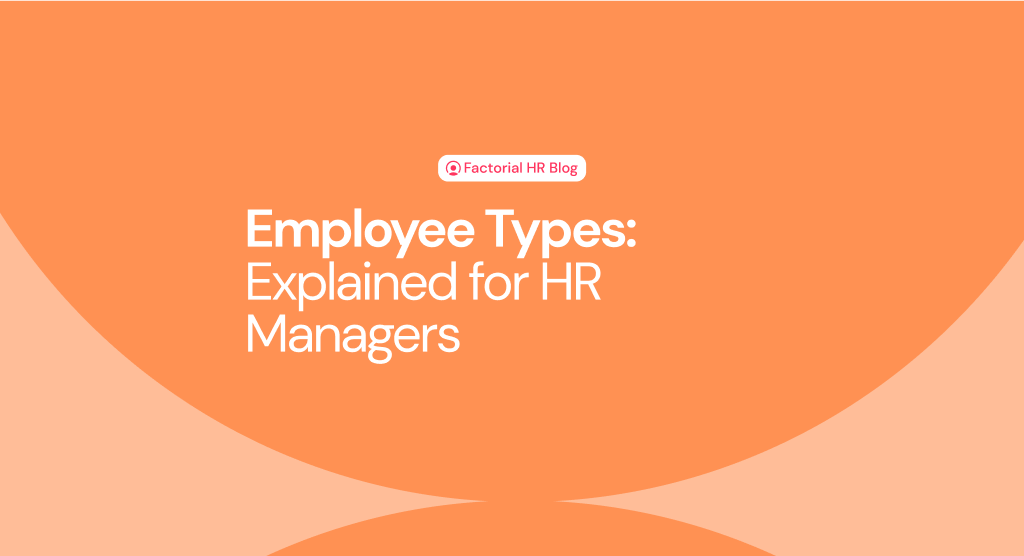Want to learn more about the New York State Worker Adjustment and Retraining Notification (WARN) Act? Read on for definitions, triggers, exceptions, and notice requirements, providing crucial insights for employers navigating layoffs and plant closures.
TABLE OF CONTENTS
- What is the WARN Act in New York?
- New York WARN Act Requirements
- Summary of NY WARN Act Triggers
- WARN Definitions New York
- New York WARN Act Exceptions
- New York State WARN Notice
- Changes to NY WARN notice regulations
- Federal WARN and New York WARN Act comparison
- Layoff offboarding tips
- How to offboard with software 🚀
What is the WARN Act in New York?
The Worker Adjustment and Retraining Notification (WARN) Act in New York is a vital law that protects employees during layoffs or plant closures. The federal WARN Act sets rules for employers nationwide. Some states, like New York, California, and Illinois have their own specific requirements. Employers need to understand New York’s WARN Act, as it has unique rules that differ from the federal guidelines. This segment explores why the New York WARN Act is essential for employers, highlighting its role within state and federal employment regulations.
The law mandates employers to provide employees with a WARN notice letter before layoffs and plant shutdowns. How far in advance though? The time frame given in New York law differs from the notice period mandated in federal law. Read on for all details.
New York WARN Act Requirements
Compliance with the Worker Adjustment and Retraining Notification (WARN) Act in New York involves understanding specific obligations applicable to employers in the state. Unlike the federal WARN Act, New York has its own set of requirements that shape how employers must handle layoffs and plant closures.
1. Minimum Number of Employees:
The New York WARN Act applies to organizations with 50 or more employees. This threshold is lower than the federal requirement, encompassing a broader range of employers.
2. Minimum Number of Employees if Plant is Closing:
New York mandates compliance if an organization lays off over 25 employees within a 30-day period due to a plant closing. This number is lower than the federal requirement, aiming to provide enhanced protection for employees.
3. Minimum Number of Employees if it is a Mass Layoff
For mass layoffs, New York requires compliance of more than 25% of employees, with a minimum of 25 full-time employees (or more than 250 employees), are laid off within a 30-day period.
4. Advanced Notice Required:
Employers covered by the New York WARN Act must provide a 90-day notice period to affected employees. This is an extension from the federal requirement of 60 days, providing additional time for employees to prepare for impending changes.
5. Notice Required If Relocating:
Unlike the federal WARN Act, New York requires notice for any relocation that removes substantial operations to a location over 50 miles away. This notice must be provided to employees, employee representatives, the New York Department of Labor, and local Workforce Investment boards.
Navigating these specific requirements is essential for employers in New York to ensure compliance with the state’s WARN Act. Understanding these nuances is crucial for fostering a fair and transparent work environment during times of significant workforce changes.
Businesses with less than 50 employees DO NOT have to submit a WARN notice. This law only applies to businesses with more than 50 employees.
Summary of New York WARN Act Triggers
The New York Worker Adjustment and Retraining Notification (WARN) Act has distinct triggers for employers:
1. Minimum Employees: Applies to organizations with 50+ employees.
2. Plant Closing Layoffs: Mandates compliance if over 25 employees are laid off within 30 days due to a plant closing.
3. Mass Layoff Thresholds: Triggers compliance if over 25% of employees (min. 25 full-time or 250 employees) are laid off within 30 days.
4. Extended Notice Period: Requires a 90-day notice period, exceeding the federal 60-day requirement.
5. Relocation Notice: Instructs notice for relocations removing substantial operations over 50 miles away.
These triggers prioritize transparency and protection for employees during workforce adjustments under the New York WARN Act, and understanding them is essential if employers want to ensure timely notice.
WARN Definitions New York
Staying compliant starts with understanding these definitions that shape the New York WARN Act:
- Plant closure: This is defined by the shutdown of a site employing 50 or more workers. This triggers specific provisions under the state’s WARN Act, requiring employers to provide advance notice to affected employees and relevant authorities.
- Mass layoff: This occurs when over 25% of employees, with a minimum of 25 full-time employees (or more than 250 employees), are laid off within a 30-day period. This triggers obligations under the state’s WARN Act, including the need for advance notice to affected employees and relevant authorities.
Familiarize yourself with the specific language used in the legislation, and always research requirements through official sources or seek legal counsel if you’re unsure on how to stay compliant.
New York WARN Act Exceptions
The New York Worker Adjustment and Retraining Notification (WARN) Act, designed to safeguard employees during workforce changes, has specific exceptions:
1. Natural Disasters and Calamities: No WARN Act obligations in cases of layoffs, relocations, or plant closures due to natural disasters or acts of war.
2. Project or Undertaking Completion: Exemptions apply when closures or layoffs result from completing specific projects, especially in industries like Motion Pictures, Construction, Drilling, Logging, and Mining.
3. Seasonal Employment: Notice requirements are waived for employees in seasonal roles, where employment is explicitly temporary.
4. Capital or Business Pursuit: An exception exists when employers actively seek capital or business, with potential waiver of notice requirements to obtain funding or contracts. This exception excludes mass layoffs as defined in the New York Labor Code.
Employers should keep these in mind during unique circumstances to adhere to the New York WARN Act and foster a fair work environment.
What is a New York State WARN Notice?
As mandated by federal and New York law, employers must give employees a notice letter 90 days before mass layoffs. What should a notice letter include?
The NY WARN notice must include
According to New York law, a WARN notice letter must include the following:
- Indication of permanent or temporary layoff
- Dates of layoff and last day of work
- Contact information for additional details
Additional guidelines for creating a WARN notice that meets requirements:
- Clear, concise, and timely WARN notice
- Adherence to state and federal regulations
- Comprehensive communication of workforce changes
- Details: effective date, reasons, and affected employees
- Legal compliance with personalized and respectful language
- Information on available resources and contact details
- Maintain a record of delivery for documentation
- Facilitates effective communication, transparency, and empathy
Important: The notice must be in writing. Verbal announcements and notices in pay statements don’t meet the 90-day requirement.
Related: Labor Laws for New York Employers
Changes to NY WARN notice regulations
Effective June 2023, amendments to the NY WARN Act are in place.
The changes include:
- Counting remote workers as employed at their base site.
- Revising WARN notice content and recipients.
- Addressing responsibility for notice in case of sale of the business.
- Clarifying the faltering business exception for plant closings only. (not mass layoffs)
- Providing additional examples for the unforeseeable business circumstance exception, including pandemics.
- Requiring employers to submit detailed information and documentation to the NY DOL in advance for determining whether the criteria for an exception is met.
This guide covers the key aspects of the New York WARN Act, from requirements and triggers to exceptions and notice procedures.
Federal WARN and New York WARN Act comparison
The New York State WARN Act introduces notable divergences from the federal regulations, establishing more stringent guidelines in five crucial areas. These variations significantly impact how employers navigate the complexities of layoffs and plant closures within the state.
Differences Between Federal and New York State WARN Act Requirements
1. Minimum Number of Employees:
- Federal: The federal WARN Act applies to employers with over 100 employees.
- New York State: The New York WARN Act extends its coverage to organizations with 50 or more employees. This lower threshold broadens the scope of employers required to comply with the Act.
2. Minimum Number of Layoffs if Plant is Closing:
- Federal: Under federal regulations, compliance is mandatory if over 50 employees are laid off within a 30-day period when a plant is closing.
- New York State: Unlike this, the New York WARN Act establishes a more stringent criterion, necessitating compliance if over 25 employees are laid off within the same timeframe. This requirement aims to extend protection to a larger segment of the workforce.
3. Minimum Number of Layoffs if it is a Mass Layoff:
- Federal: The federal WARN Act requires compliance if an organization lays off more than 33% of its employees, with a minimum of 50 full-time employees affected (or more than 500 employees), within a 30-day period.
- New York State: On the other hand, the New York WARN Act introduces a different standard, requiring compliance if more than 25% of employees are laid off, with a minimum of 25 full-time employees affected (or more than 250 employees), within the same timeframe. This nuanced approach aims to offer enhanced protection to a broader range of employees.
4. Advanced Notice Required:
- Federal: Federal regulations mandate a 60-day notice period for affected employees.
- New York State: The New York WARN Act extends this notice period to 90 days. This prolonged duration provides employees with additional time to prepare for impending changes, reinforcing the state’s commitment to employee rights.
5. Notice Required If Relocating:
- Federal: Federal WARN Act regulations do not necessitate organizations to provide notice for a relocation unless the relocation is part of a mass layoff or plant closing.
- New York State: In contrast, the New York WARN Act requires notice for any relocation that removes all or substantially all of an organization’s industrial or commercial operations to a location over 50 miles away. Furthermore, organizations must notify employees, employee representatives, the New York Department of Labor, and local Workforce Investment boards. This multifaceted requirement underscores the state’s emphasis on transparency and preparedness during relocations.
Similarly to California, New York also has a Shared Work Program.
Layoff offboarding tips
HR managers have a significant job to do when it comes to implementing the mandates of the WARN Act. However, it is crucial that they do so, as compliance ensures a fair and transparent process during significant workforce changes. By protecting the rights of employees, HR professionals can contribute to a positive workplace culture and maintain compliance with federal and state regulations.
Once employees have been notified of upcoming layoffs, the next big task is beginning the employee offboarding process.
Offboarding with Factorial
Factorial simplifies the offboarding process, streamlining tasks and ensuring a smooth transition for departing employees. With Factorial, you can efficiently manage exit procedures, such as collecting company assets, updating access permissions, and conducting exit interviews. Offboarding software simplifies the entire process from start to finish.
Key Features for offboarding during layoffs:
1. Clear Communication: Easily communicate departure details to the departing employee, including the last day of work, return of company property, and other essential information.
2. Task Automation: Automate offboarding tasks, such as revoking system access, updating records, and notifying relevant departments, saving time and minimizing the risk of oversight.
3. Documentation and Compliance: Ensure compliance by generating necessary documentation, such as termination letters and exit surveys, helping you maintain a comprehensive record of the offboarding process.
4. Access Control: Centralize access control management, making it simple to revoke access to company systems and confidential information, safeguarding your organization’s data.
By utilizing Factorial for offboarding, HR managers can enhance efficiency, maintain compliance, and provide a positive experience for departing employees.









